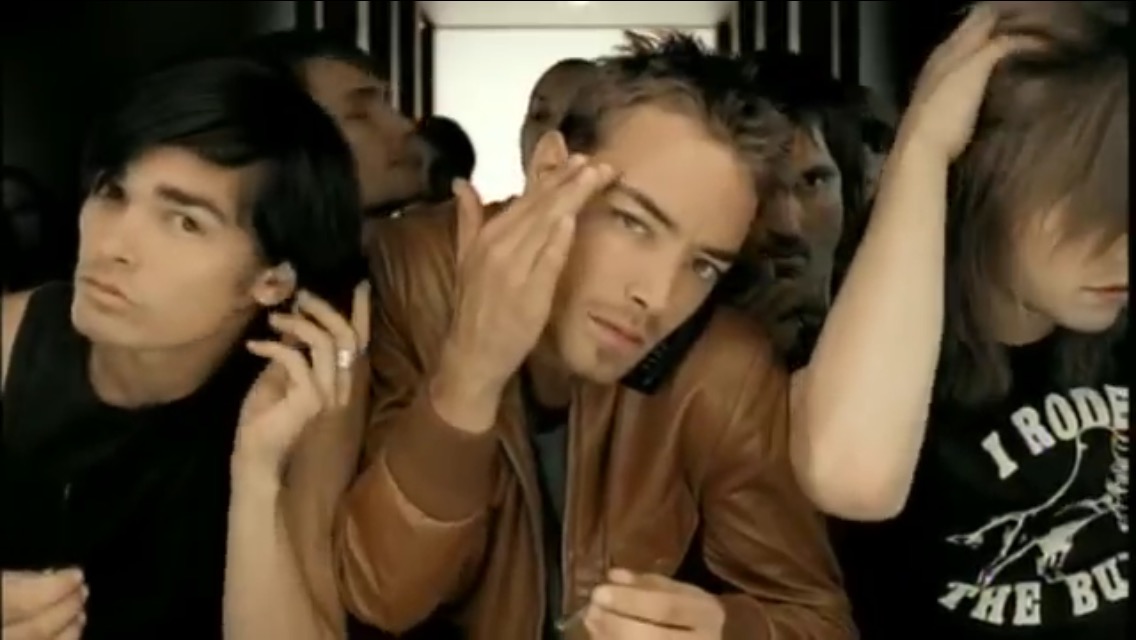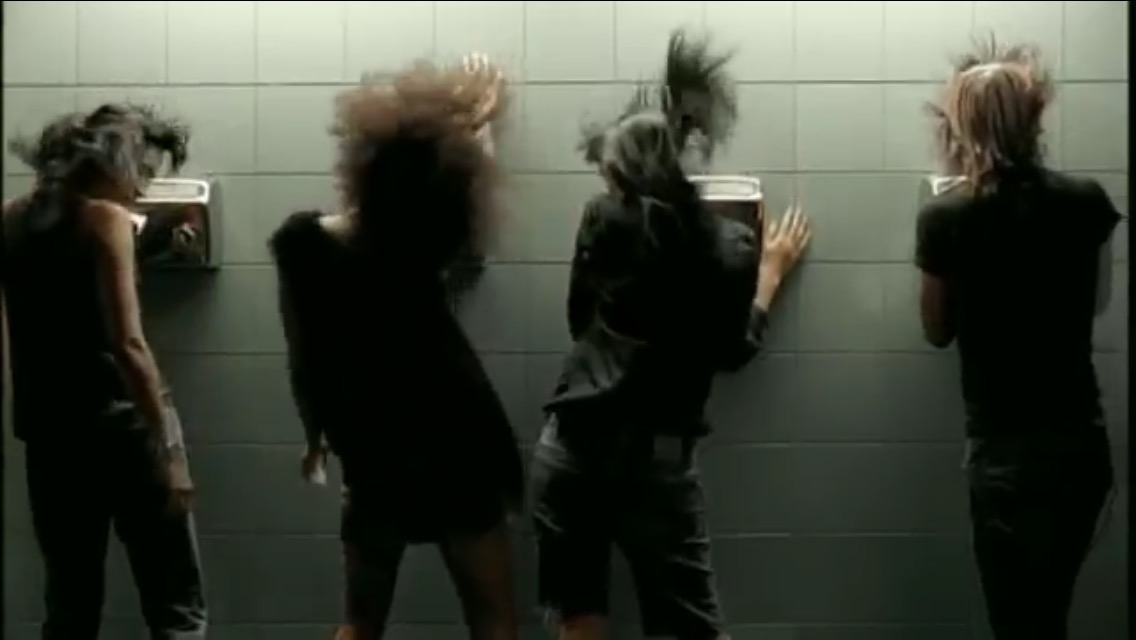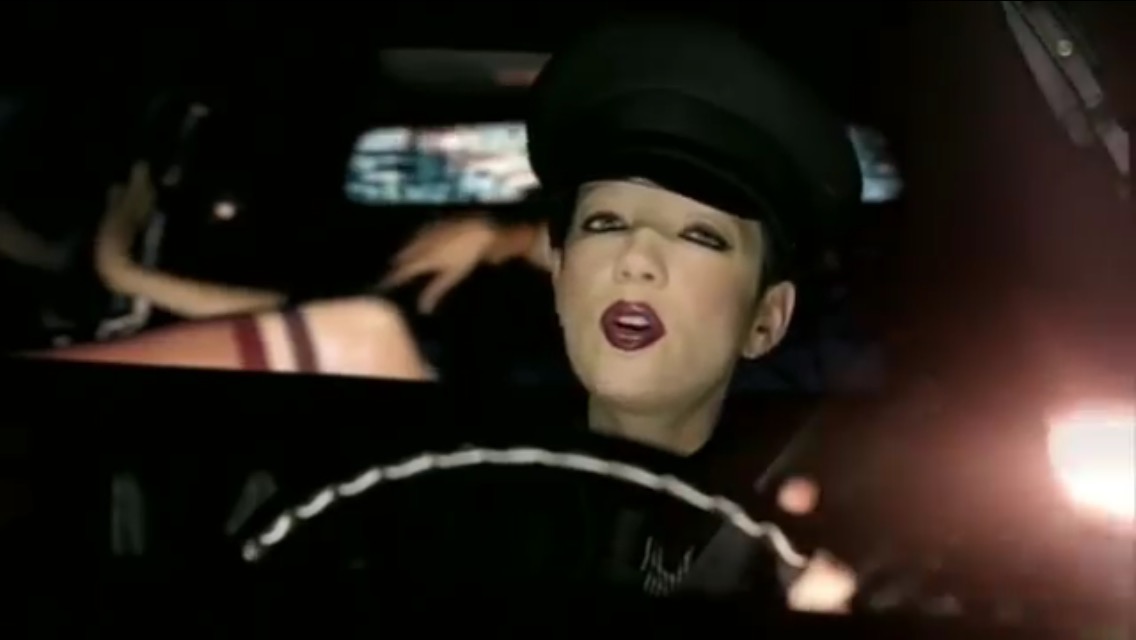

Queerness is not necessarily an immediate signifier of same-sex attraction. To be queer does not mean that you must be a man who likes men or a woman who likes women, yet, in the most political sense, being queer involves being LGBTQ+. Examining the idea of what it means to queer gender norms, I examine two particular music videos for two songs from the band Garbage’s Beautiful Garbage (2001) album. These two music videos are for “Androgyny” (2001) and “Cherry Lips” (2001), both released as singles from the band’s album.
Before examining queerness in the context of these two musical artifacts, we could perhaps ask three questions:
1.) What does it mean to perform gender in a particular way?
2.) How does the spectated performance affect the perception of gender?
3.) Why do spectated performances of gender engender or transgress certain deeply held perceptions about masculinity and femininity?
When we consider the ways in which people queer gender performances, we must think of masculinity and femininity not as mutually exclusive categories, but rather as inclusive categories, areas that overlap and oftentimes mix together. To help visualize this idea, one could consider the way in which the color purple is made from both blue and red. Without either blue or red, the color purple is not the color purple, yet blue and red can sometimes be unequally distributed throughout what we understand as a strictly purple mixture. In fact, what we interpret as purple might be a large portion red and a small portion blue or vice versa. Given this example involving how both blue and red constitute the color purple, we then can apply this to gender because both masculinity and femininity combine to constitute the particular gender identities of people. Gender, however, is far more difficult to bring into conversation than the color purple; it is problematic because of its perceived restrictiveness. People moreover push themselves—and other people—into silence over gender because they would rather not face a reality in which their initial simplistic perceptions are contested by the complex reality of human difference. On gender, Chimamanda Ngozi Adichie (2014) writes:
Gender as it functions today is a grave injustice […] Gender is not an easy conversation to have. It makes people uncomfortable, sometimes even irritable. Both men and women are resistant to talk about gender, or are quick to dismiss the problems of gender. Because thinking of changing the status quo is always uncomfortable. (p. 21; p. 40)
The trouble with gender (the “gender trouble” in reference to Judith Butler’s Gender Trouble) is that people think masculinity and femininity are exclusive categories that cannot be transgressed. People create boundaries around what they perceive as masculine and feminine, defining anyone who transgresses these boundaries as a stranger or as an “Other.” In Garbage’s music video for the song “Androgyny,” the band contests what much of American society might perceive as “the masculine” and “the feminine” by queering expressions of gender, sexuality, and desire. Here is the music video for “Androgyny” on YouTube:
Regarding “changing the status quo,” Garbage’s “Androgyny” presents images that contradict what we perceive in our civilization as a familiarity of gender. Shirley Manson (the lead singer) performs gender in a queer—and androgynous—way which exists between the masculine and the feminine. Manson’s performance in “Androgyny” represents the color purple, consisting of both blue and red. In the music video, gender becomes a visible mixture of masculine and feminine.

When Manson presents this androgynous gender performance, she takes gender and puts it under a process of making strange, a means through which the familiar is reinterpreted into a newly perceived unfamiliar. Z.D. Gurevitch (1988) writes that the “process of making strange,” occurring only when one looks at a “normal”—and “abnormal”—aspect of life previously taken for granted, may not only bring out “new understandings and recognition,” but also potentially “threat and anxiety,” a sense that the gatekeepers of normalcy are being attacked by the perceived stranger (p. 1186). In the case of Garbage’s “Androgyny,” an obvious discomfort arises as Manson pushes back on images of heteronormativity, on the ways in which gender is constructed rigidly in civilization.


Exploring the fluidity of gender, Garbage performs their other single “Cherry Lips” in a video that creates an ambiguity around the gender of the character portrayed by Manson. Here is the music video for “Cherry Lips” on YouTube:
Further queering gender, Garbage’s “Cherry Lips” involves a “delicate boy” who “look[s] just like a girl.” As she performs in the video, Manson’s character is essentially invisible, yet we see him/her on the TV screens with short platinum blonde hair. By the end of the video, the invisible character Manson plays, even while dressed in leather gloves and high-heeled boots, walks into the bathroom and pees while standing. The character in “Cherry Lips” represents not necessarily the androgyny of gender, but rather the ambiguity of gender. The boundaries of what an audience perceives as finitely male and finitely female are transgressed as the character expresses his/her gender fluidly rather than rigidly.


Garbage’s queering of sexuality and gender in both “Androgyny” and “Cherry Lips” reveal how what civilization perceives as “normal” is not to be taken for granted. What society often understands as “normal” is not the standard by which to measure all other people since there can always be people who exist outside of a normal. Discussing how queerness creates an uncomfortable environment, Kathy Rudy (2000) writes:
Queer politics are explicitly and intentionally designed to make ‘straight people’ feel extremely uncomfortable in order to make them think about how contingent the foundations of the repressive ‘normal’ world really are. (p. 204)
Rudy’s discussion of the “contingent” foundations of normalcy goes back to my third question from earlier in this piece: Why do spectated performances of gender engender or transgress certain deeply held perceptions about masculinity and femininity?

We know that people particularly in our society and culture (Western culture) tend to see two colors when thinking of gender: blue and red (NOTE: Gender exists in rigid forms across other cultures besides American culture). People tend to visualize masculinity and femininity as a strict dichotomy, yet Garbage’s “Androgyny” and “Cherry Lips” destabilize the strictness of gendered confinement. Through these presentations and performances of gender and sexuality, the contingency of both gender and sexuality become more evident. Masculinity and femininity, after all, are inventions because humans must first be socialized into manhood and socialized into womanhood. A baby is not born with knowledge of masculine acts just as a baby is not born without knowledge of feminine acts. Society, however, takes masculinity and femininity for granted and any deviations to this imposed normalcy generate “threat and anxiety,” a sense of newly conceived strangeness that contradicts preconceived sameness. Babies are not born with the knowledge to differentiate blue, red, and purple until they are taught the difference between the colors, understanding that blue, red, and purple are supposedly definite in their differentness and sameness, yet the babies forget that purple is not as definite upon closer inspection.

